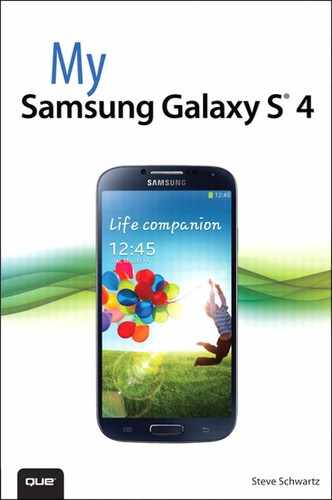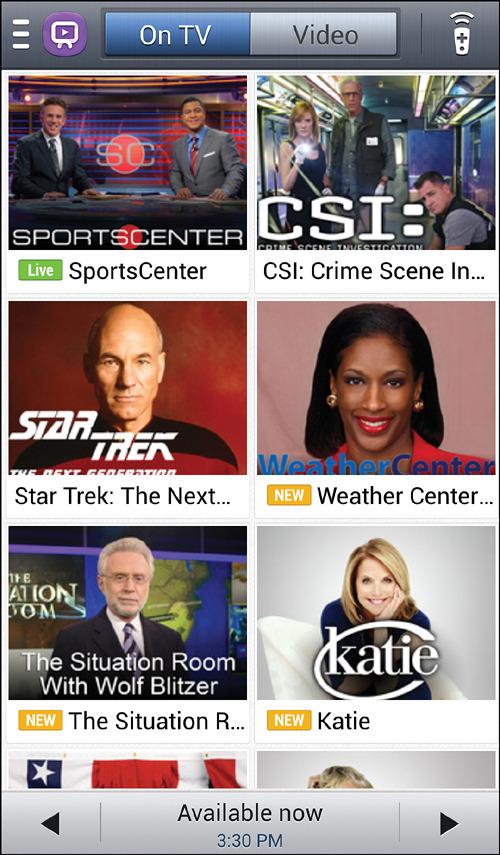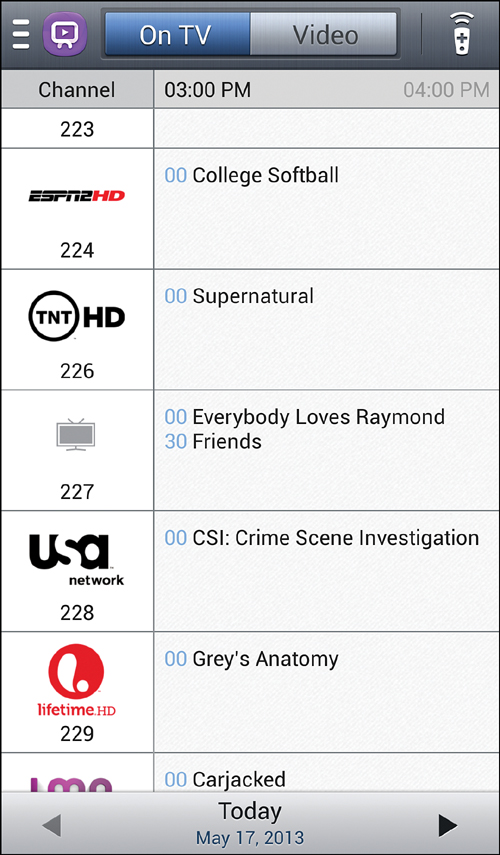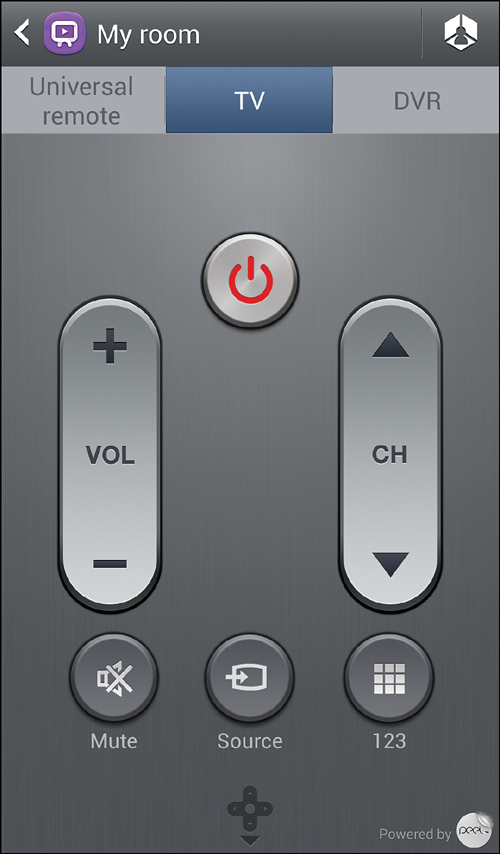18. Powering Other Devices

In this chapter, you find out how to use your phone to provide Internet access for other devices and to control external devices. Topics include the following:
→ Creating a Wi-Fi hotspot with the phone
→ Using a USB cable to tether your phone to a Windows PC
→ Controlling a television set with the WatchON app
→ Using the optional Samsung MHL 2.0 HDTV Adapter to mirror the phone’s screen on an HDTV
If your laptop or desktop computer currently lacks Internet access—when traveling or during a provider outage, for example—you can use your phone as the equivalent of a USB (tethering) or wireless (mobile or portable hotspot) modem. Because the S 4 has infrared capabilities, you can configure the included WatchON app to control your TV with the phone. And if you buy the optional MHL 2.0 HDTV Adapter, anything on the phone can be displayed on your HDTV.
Creating a Mobile HotSpot for Wi-Fi Devices
Using the phone’s Tethering and Mobile HotSpot settings in combination with your 3G or 4G data connection, your phone can become a hotspot through which up to eight Wi-Fi devices can simultaneously connect to the Internet. (Some carriers call this a mobile hotspot and others call it a portable hotspot.)
A Plan Add-On
Creating a mobile hotspot and tethering may not be included in your data plan. They frequently cost extra and must be ordered from your carrier as needed. Before trying these features, check with your carrier for details on the cost and the procedure for enabling/disabling this add-on service.
1. On the Home screen, tap Apps, followed by Settings.

2. Select the Connections tab and tap More Networks.
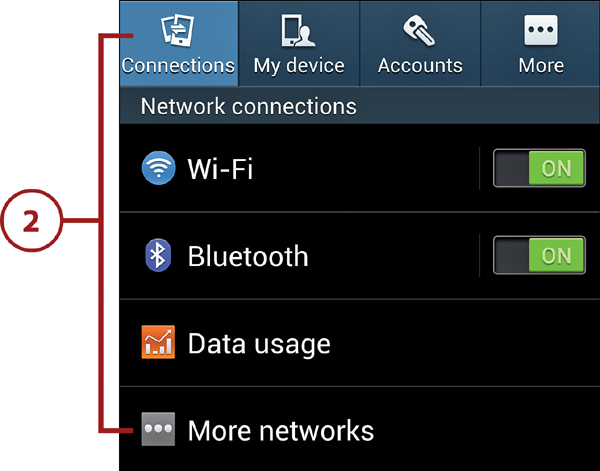
3. Tap Tethering and Portable HotSpot.

4. Drag the Mobile Hotspot slider to the On position.
Or Simply Launch the App
Some carriers provide an app that—when launched—takes you directly to the Tethering and Mobile HotSpot settings. It’s not special software; it’s just a shortcut that takes you directly to this step.
5. If Wi-Fi is currently enabled for the phone, an Attention dialog box appears. Tap OK to turn Wi-Fi off. (The hot spot runs only over a cellular connection, not Wi-Fi.)
6. Tap Mobile Hotspot to see the Mobile Hotspot screen that shows the current connection settings, connected devices, and password.
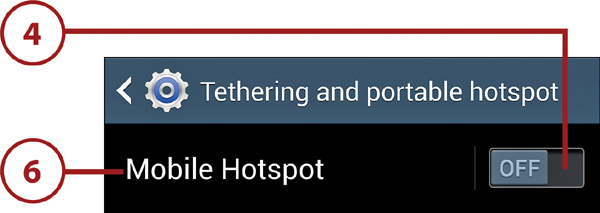
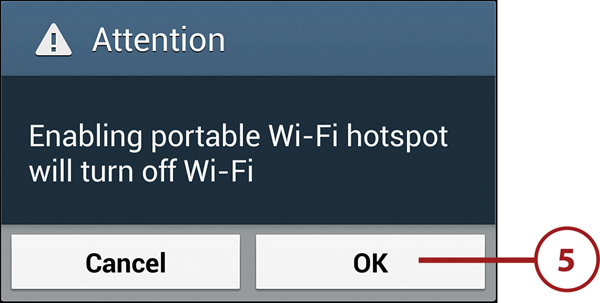
7. You can optionally edit the default settings—changing the connection name, selecting a security protocol, and setting a different password—by tapping Configure. Otherwise, go to step 9.
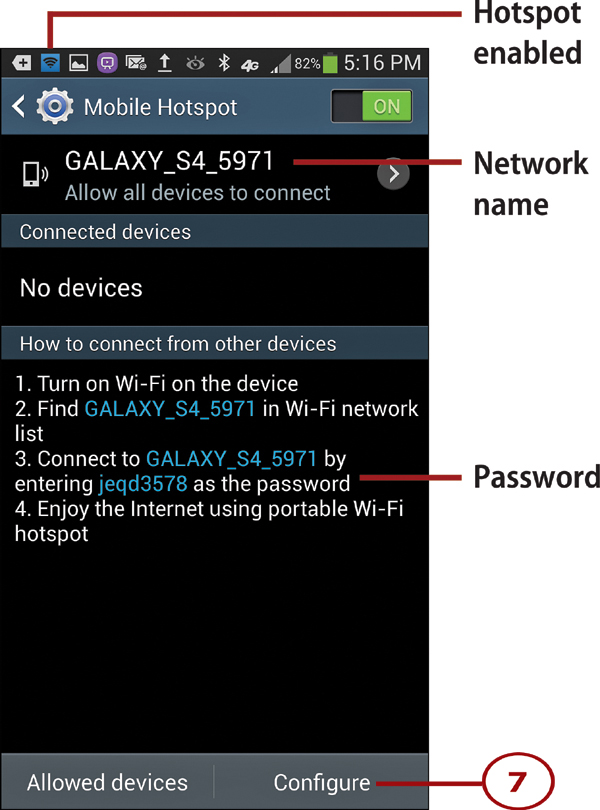
8. Make any desired changes to the settings and tap Save.
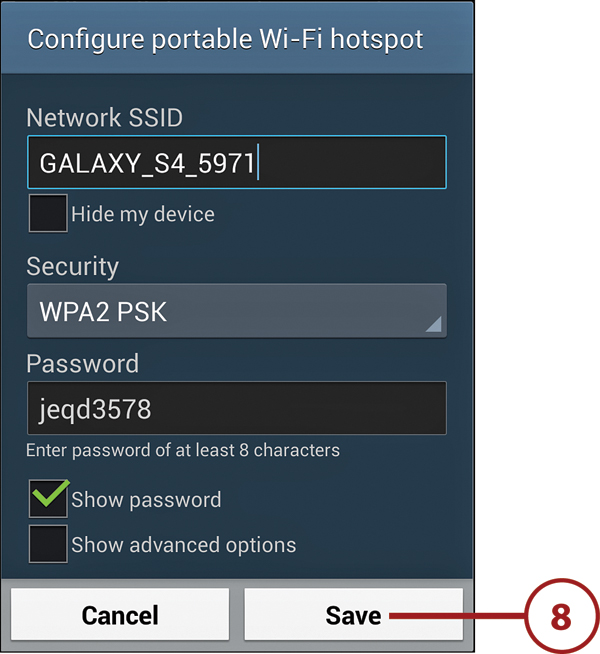
9. Connect up to eight Wi-Fi-enabled devices (laptops, tablets, iPods, and so on) to the hotspot network by selecting the hotspot network’s name on each device and entering the password when prompted. (The figure shows this process for a Windows PC.)
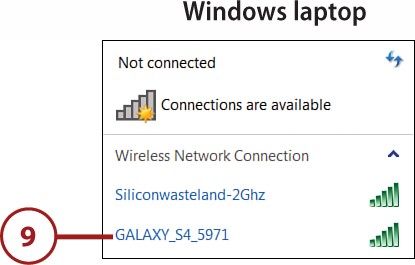
Connected Devices
While the hotspot is active, the Mobile Hotspot screen displays a list of all connected devices.
10. When you finish, deactivate the hotspot by dragging the Mobile HotSpot slider to the Off position. Mobile HotSpot quits, all devices are disconnected, and Wi-Fi is automatically re-enabled (assuming a Wi-Fi network is available).

Tethering the Phone and a PC
Another way to provide Internet access to a computer is to connect the phone and computer with the phone’s USB cable (referred to as tethering). Unlike a mobile hotspot, tethering is restricted to only one computer at a time and is currently available only for Windows and Linux-based computers.
Bluetooth Tethering
In addition to USB tethering, some carriers may support wireless tethering using Bluetooth.
1. Windows users only: Visit the Support section of Samsung’s site (http://www.samsung.com/us/support/) to download and install the USB driver for your carrier’s Galaxy S 4. Note that installing the device driver is a one-time process.

Finding Your Model Number
You can find your phone’s carrier-specific model number by opening Settings, selecting the More tab, and tapping About Device.

2. Connect the phone’s USB cable to the phone and to one of the PC’s available USB ports.
An Extra Step
In Windows, you may see a notice that the necessary drivers are being installed. When installation finishes, an AutoPlay dialog box appears, asking what you want to do with the new connected device; that is, the phone. Click Open Device to View Files.
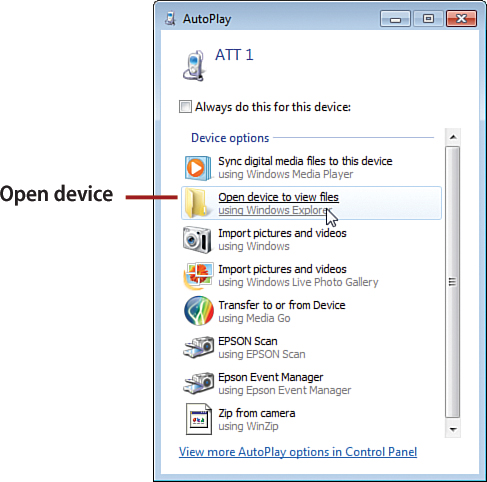
3. On the Home screen, tap Apps, followed by Settings.

4. Select the Connections tab and tap More Networks.
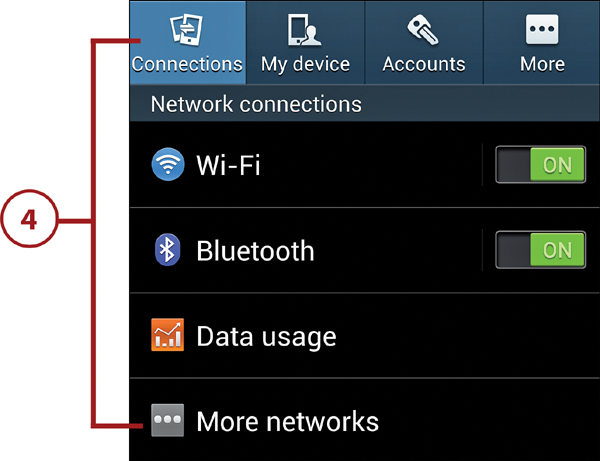
5. Tap Tethering and Portable Hotspot.
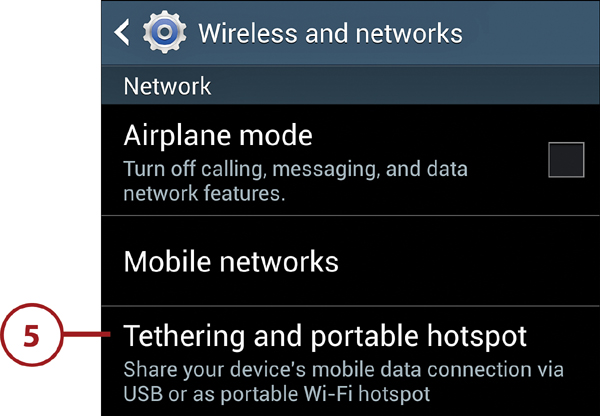
6. Enable tethering by tapping USB Tethering.
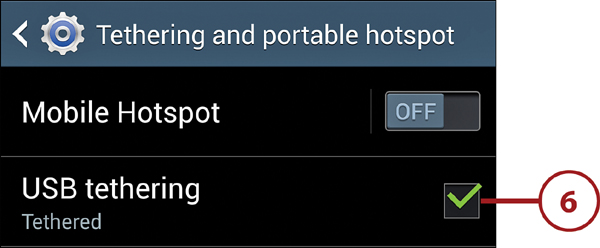
7. After the computer recognizes the phone, you can use the PC’s browser and other Internet applications.
8. When you’re done using the phone as a USB modem, remove the check mark from USB tethering (see step 6), eject the phone hardware in the same way that you do with other connected USB devices, and disconnect the USB cable.
Disconnection Details
You should never simply unplug a USB data device. Click the Safely Remove Hardware icon at the far right of the Windows task bar, choose the Eject phone model command from the pop-up menu that appears, and—when you’re told that it’s safe to do so—disconnect the USB cable. (If the Safely Remove Hardware icon isn’t displayed, wait until you’re certain that no data is being transferred between the phone and PC, and then disconnect the USB cable.)

Mirroring the Phone on an HDTV
With Samsung’s optional MHL 2.0 HDTV Adapter, you can use your flat-screen TV to display whatever is shown on the phone.
1. Plug an HDMI cable into the adapter.
2. Connect the other end of the HDMI cable to your flat-screen television.
3. Using your television’s Input menu, select the HDMI input to which the adapter is connected.
4. Plug the adapter’s cable into your phone’s USB port.

5. On the phone, run any application that you want to display on the TV.
